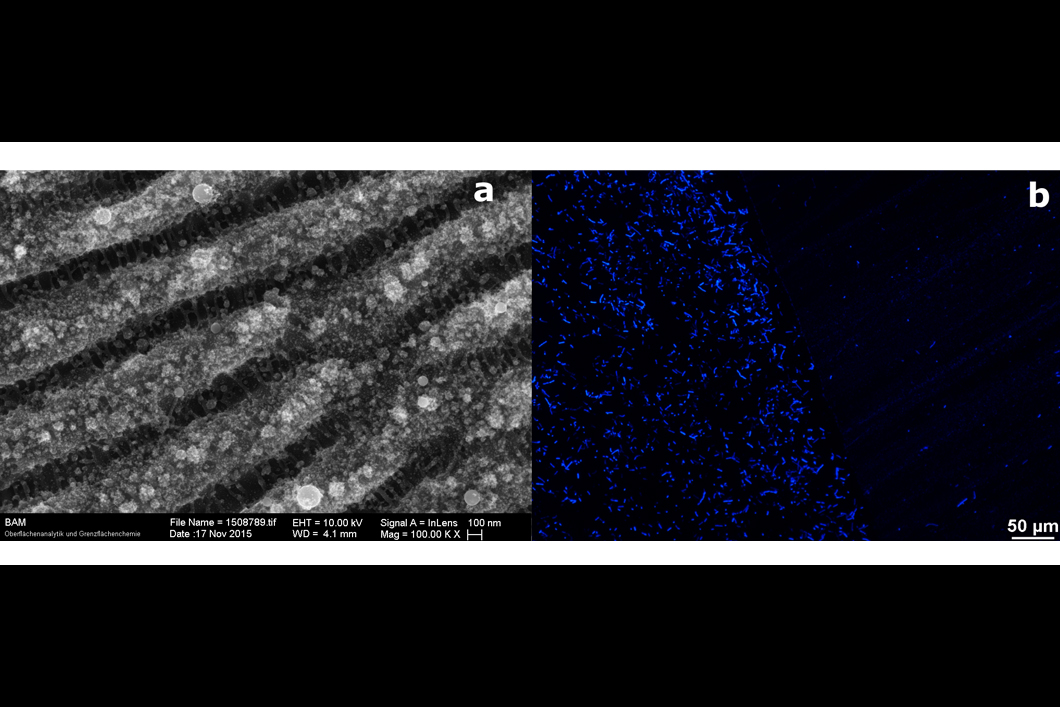
a) LIPSS-covered area on V4A steel. b) Fluorescence microscope image of a steel sample (V4A) colonized with E. coli (left). Reduced adhesion on the laser-treated LIPSS area (right).
Source: BAM, Division Nanomaterial Technologies and Division Surface Analysis and Interfacial Chemistry
A biofilm is an assembly of microbial cells that is irreversibly adhered to a surface. The development of a biofilm is a gradual process which starts with microbial surface attachment. Bacteria organized in a biofilm show enhanced resistance towards environmental stress or antibiotics. This fact makes biofilms problematic but also attractive. On the one hand, the films pose a major risk for bacterial infections which could be resistant to antibiotic treatments. On the other hand, the robust nature of biofilms is an interesting feature for industrial applications. A key step in biofilm formation is bacterial adhesion which can be influenced by surface roughness.
Laser based techniques can be used to modify the surface of materials. Utilizing ultrashort laser pulses, the generation of so-called laser-induced periodic surface structures (LIPSS) is possible on the surface of almost any material. Often LIPSS with a spatial period of the order of the laser wavelength are formed. In this paper, large-area LIPSS with periods of about 700 nanometer were produced on two different steel surfaces employing 30-femtosecond laser pulses at 790 nanometer laser wavelength.
Laser-structured samples were then subjected to microbial adhesion tests in a flow chamber with Escherichia coli and Staphylococcus aureus as test strains. For corrosion resistant V4A steel and E. coli as test strain, an anti-adhesion effect was observed on the LIPSS area. This inhibition effect was not present on the corrosion prone S235JRC steel. Moreover, for testing of the same material, a dependency between bacterial cell geometry (Escherichia coli is rod-like and Staphylococcus aureus has a round form) and anti-adhesion effect was observed, as colonization behavior of S. aureus differed significantly from that of E. coli. It was demonstrated that the femtosecond laser machining is a powerful technique for controlling bacterial colonization where bacterial adhesion can be favored or suppressed.
Influence of femtosecond laser produced nanostructures on biofilm growth on steel
Nadja Epperlein, Friederike Menzel, Karin Schwibbert, Robert Koter, Jörn Bonse, Janin Sameith, Jörg Krüger, Jörg Toepel
Applied Surface Science, Volume 418, Part B, 1 October 2017, Pages 420-424
BAM Abteilung Material und Umwelt, Fachbereich Biologische Materialschädigung und Referenzorganismen und Abteilung Materialschutz und Oberflächentechnik, Fachbereich Technologien mit Nanowerkstoffen


